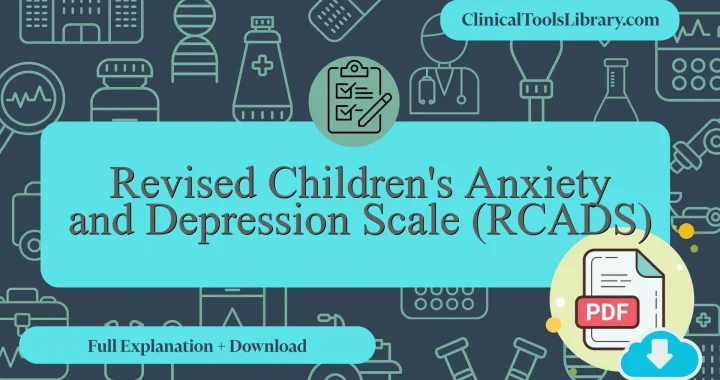In this article, we explain everything you need to know about the Denver Developmental Screening Test. We will cover the aspects it evaluates, the target population, a detailed step-by-step explanation, and how to interpret its results. Additionally, we will dive into the scientific evidence supporting this tool (diagnostic sensitivity and specificity) in clinical assessment. You will also find official and unofficial sources available for download in PDF format.
What does the Denver Developmental Screening Test assess?
The Denver Developmental Screening Test is a standardized tool used to evaluate the developmental progress of children from birth to six years of age. It assesses four critical domains: personal-social, fine motor-adaptive, language, and gross motor skills. The primary purpose of the test is to identify children who may have developmental delays or require further comprehensive evaluation. Healthcare professionals utilize the Denver Developmental Screening Test Manual to ensure accurate administration and interpretation, followed by Denver Developmental Screening Test scoring to determine performance relative to age expectations. The test is often administered through the Denver Developmental Screening Test Questionnaire and is accompanied by guidelines explaining how to do the Denver Developmental Screening Test. Results offer valuable insight to inform early intervention strategies tailored to the child’s needs.
For which type of patients or populations is the Denver Developmental Screening Test intended?
The Denver Developmental Screening Test is primarily indicated for children from birth to six years of age to identify potential developmental delays in areas such as personal-social, fine motor-adaptive, language, and gross motor skills. It is most useful in pediatric and primary care settings where early detection of conditions like autism spectrum disorder, cerebral palsy, and other neurodevelopmental disorders is critical for timely intervention. The test facilitates standardized assessment through the use of the Denver Developmental Screening Test Questionnaire and scoring protocols to ensure accurate interpretation of developmental milestones relative to age norms. Its application supports clinicians in differentiating children who require further comprehensive evaluation from those demonstrating typical development, optimizing resource allocation in early childhood healthcare services.
Step-by-Step Explanation of the Denver Developmental Screening Test
The Denver Developmental Screening Test consists of 125 items designed to assess four key domains: personal-social, fine motor-adaptive, language, and gross motor skills. The professional begins by obtaining the child’s age to determine the appropriate items for evaluation. Questions and tasks vary, including observing the child’s spontaneous behaviors, direct performance of tasks, and caregiver reports, with responses categorized as pass, fail, or refusal. Each item is marked within an age-specific range; items falling completely to the left of the child’s chronological age are expected to be passed, while those to the right assess emerging skills. The examiner records the child’s performance systematically, noting any delays or refusals, to identify potential developmental concerns such as autism spectrum disorder or cognitive impairments, facilitating timely referrals for further evaluation.
Denver Developmental Screening Test PDF: Manual, Questionnaire & Resources for Professionals
Professionals will find downloadable resources available below including the Denver Developmental Screening Test PDF in both the original language and English versions. These materials encompass the Denver Developmental Screening Test Manual and the Denver Developmental Screening Test Questionnaire, facilitating accurate administration and interpretation. Such comprehensive documentation supports clinicians in performing reliable assessments aligned with established guidelines for developmental evaluation.
How to interpret the results of the Denver Developmental Screening Test?
The Denver Developmental Screening Test (DDST) evaluates a child’s developmental progress across four domains: personal-social, fine motor-adaptive, language, and gross motor skills. Interpretation of results is based on age-specific milestones, with reference ranges defined by normative data indicating the expected age at which 90% of children achieve a particular task. A result is considered normal if the child passes at least 90% of the items appropriate for their age, while a delay is flagged if two or more items are failed below the expected age. Mathematically, this can be expressed by comparing the child’s chronological age to the age at which 90% of peers succeed: if the child’s performance is below this threshold, further evaluation is warranted. In practical terms, healthcare professionals use these findings to identify potential developmental disorders, such as autism spectrum disorder or cerebral palsy, prompting timely referral for comprehensive assessment and early intervention strategies to optimize developmental outcomes.
What scientific evidence supports the Denver Developmental Screening Test ?
The Denver Developmental Screening Test (DDST), developed in 1967 by Dr. Frank C. Denver and colleagues at the University of Colorado, has been extensively validated through multiple studies assessing its reliability and predictive value. Originally designed to identify children at risk for developmental delays in domains such as personal-social, fine motor-adaptive, language, and gross motor skills, the DDST demonstrated sensitivity rates between 70% and 85% in detecting conditions including cerebral palsy and autism spectrum disorder. Subsequent research has corroborated its utility in diverse populations, confirming its robustness when administered by trained health professionals. The test’s standardized scoring system and normative data derived from large cohorts provide a strong scientific foundation supporting its continued clinical application as a screening tool rather than a diagnostic instrument.
Diagnostic Accuracy: Sensitivity and Specificity of the Denver Developmental Screening Test
The Denver Developmental Screening Test (DDST) demonstrates a sensitivity ranging from approximately 75% to 83%, indicating its effectiveness in correctly identifying children with developmental delays. Its specificity varies between 70% and 85%, reflecting the test’s ability to accurately exclude children without developmental abnormalities. These metrics can differ depending on the population studied and the criteria used for diagnostic confirmation. Overall, the DDST is considered a reliable tool for early detection, facilitating timely intervention for conditions such as cognitive impairments and motor developmental disorders.
Related Scales or Questionnaires
The Denver Developmental Screening Test (DDST) shares similarities with other standardized tools such as the Bayley Scales of Infant and Toddler Development, the Parents’ Evaluation of Developmental Status (PEDS), and the Ages and Stages Questionnaires (ASQ), all of which are detailed and available for download on ClinicalToolsLibrary.com. While the Bayley Scales offer a comprehensive and detailed assessment of cognitive, motor, and language skills, their administration requires extensive training and more time compared to the DDST. The PEDS and ASQ are questionnaire-based screenings that rely on parental input, providing ease of use and quicker administration but potentially introducing subjective bias. The DDST stands out for its direct observation approach, but it may present limitations in specificity and sensitivity. Users interested in the Denver Developmental Screening Test scoring or interpretation will find relevant resources alongside explanations of these alternative tools on the website to aid clinical decision-making in developmental surveillance and early childhood developmental delays.




